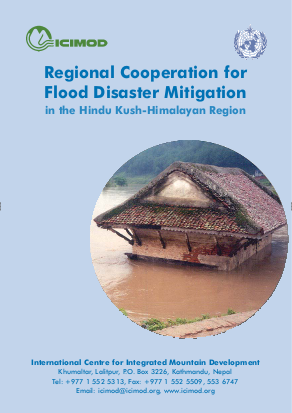
The rivers of the greater Himalayan region provide both important services as well as
life-threatening hazards. In order to achieve a sustainable development, the
management of resources and risks must go hand in hand. An integrated flood
management approach within theframework of Integrated Water Resources
Management (IWRM) should be adopted, with a view to maximise the efficient use of
flood plains and minimise the loss of life and livelihoods. Regional river basins are
integrated systems the management of which require regional solutions.
While floods cannot be prevented, an integrated cross-sectoral approach to flood management is essential to prevent flood-related disasters while retaining the
floods' positive effects. Structural measures like dikes and embankments play a significant role in flood mitigation and hazard reduction. Land use planning and building codes are important non-structural measures. But the most effective way of reducing
losses is to provide people with sufficient advance warning to be able to take other preparedness and response measures. Timely and accurate flood information based on real-time hydrometerological observations across boundaries is essential to
achieve this.
